Where Nature Greets You: Why Monte Vista National Wildlife Refuge Is Essential to Explore
Imagine stepping out of your car and immediately hearing the resonant calls of sandhill cranes echoing across a high mountain valley, while the crisp air carries the trills of meadowlarks and the gentle quacking of ducks. The Monte Vista National Wildlife Refuge isn’t just a haven for birds—it is a crossroads of migration, a critical point where wildlife and wild landscapes intersect in a dramatic seasonal dance. With nearly 15,000 acres of managed wetland and meadow encircled by the sweeping San Juan Mountains, this destination draws in those seeking beauty, diversity, and discovery.
Yet, the true value of Monte Vista extends beyond breathtaking sunrises or the simple act of birdwatching. Each year, thousands of cranes, ducks, and geese depend on these purposely irrigated habitats to rest and refuel during their long journeys. Ignoring the importance of these refuges means missing out on the engine rooms of migration that keep North America’s bird life thriving. This article explores what makes the Monte Vista National Wildlife Refuge a unique sanctuary, why its landscapes matter, and how appreciating the hidden wonders within its boundaries can change the way we think about wildlife and conservation.
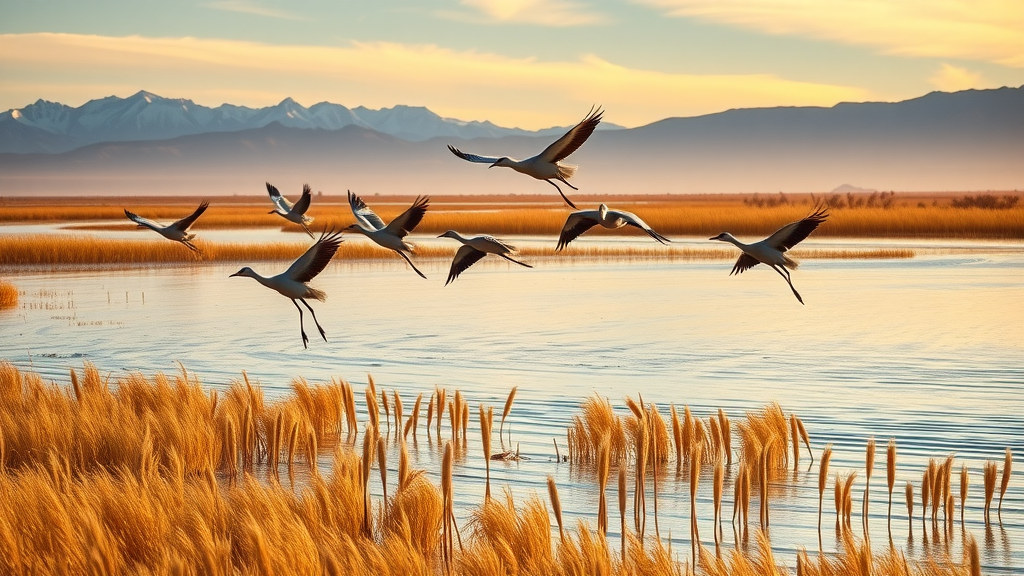
More Than Meets the Eye: The Science and Significance Behind Monte Vista’s Diverse Ecosystem
At first glance, the Monte Vista National Wildlife Refuge may appear to be a collection of serene wetlands and farm fields. But beneath the surface lies a carefully managed ecosystem supporting over 200 species of birds and countless other wildlife residents. The refuge’s artificial wetlands, sustained by a network of irrigation canals and wells, provide essential stopover habitat for waterfowl such as mallards, pintails, teals, American avocets, and white-faced ibises. Raptors like red-tailed hawks and northern harriers can often be seen soaring above, while beavers and coyotes play their roles within the landscape.
The significance of Monte Vista’s location cannot be overstated. Situated within the San Luis Valley—a high-altitude basin ringed by the Sangre de Cristo and San Juan mountain ranges—this refuge acts as a rare oasis for wildlife in an otherwise semi-arid region. During critical migration periods in spring and fall, the area’s managed wetlands become one of the few remaining lifelines for sandhill cranes and a multitude of waterfowl. Visitors who lack awareness of these ecological dynamics risk underestimating how fragile and interconnected these habitats are, and how their health is central to the future of both wildlife and the humans who draw inspiration from their presence.
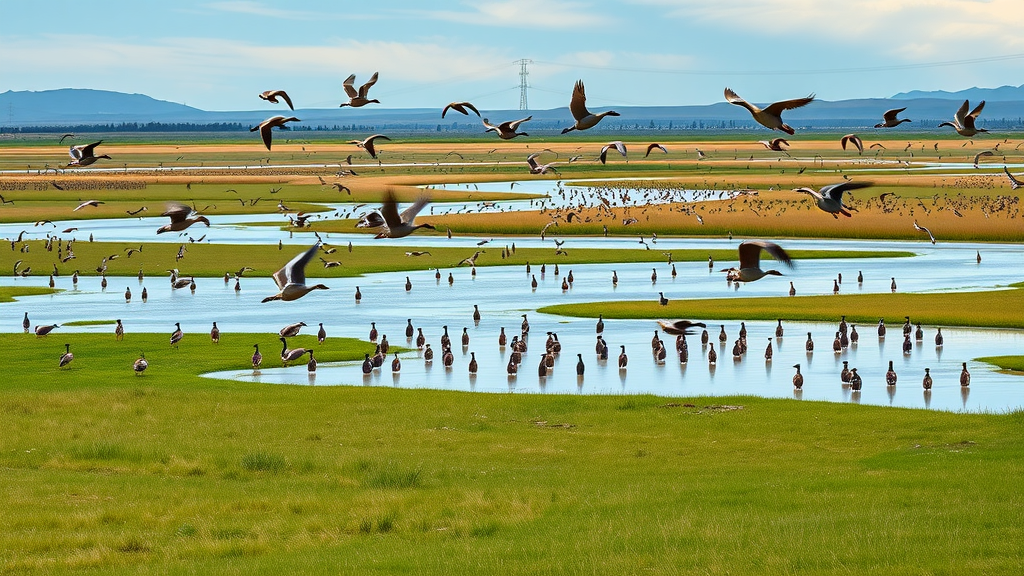
Why Monte Vista National Wildlife Refuge Matters: Critical Stopover for Sandhill Cranes and Migrating Waterfowl
As one of the three key wildlife refuges in Colorado’s San Luis Valley, Monte Vista National Wildlife Refuge is a vital waypoint for migratory birds. Each spring and fall, it hosts between 18,000 and 21,000 Greater Sandhill Cranes—95% of the Rocky Mountain population—alongside 5,000 to 6,000 Lesser Sandhill Cranes. These birds descend on Monte Vista when food is scarce elsewhere, drawn by wetlands filled with fresh water and grain fields managed specifically to provide both nourishment and secure roosting spots. Without these managed environments, vast crane populations would struggle to find the resources needed to complete their migrations.
For visitors, witnessing this phenomenon is an experience of pure awe. The blend of open vistas, busy wetlands, and the sight of cranes dancing and calling in dawn’s light forms a living tapestry that’s both dynamic and delicate. The refuge also supports hundreds of ducks, geese, raptors, and songbirds throughout the year, highlighting its significance not only as a migration corridor, but as a year-round sanctuary for Colorado’s native wildlife. In a landscape where water and habitat are precious commodities, Monte Vista ensures that biodiversity continues to thrive.
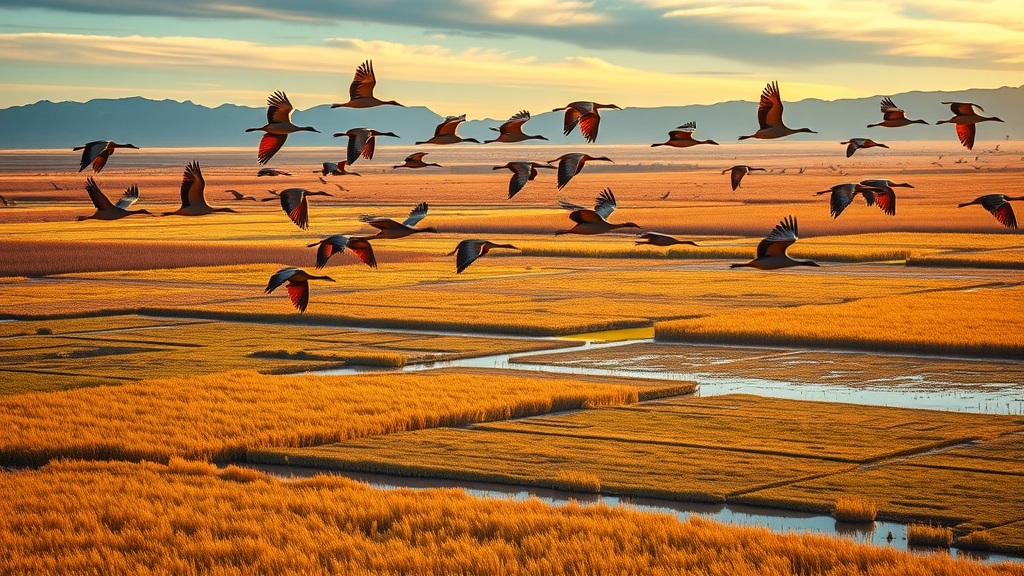
Understanding the Landscape: How Monte Vista’s Habitats Are Intentionally Shaped
Unlike purely wild spaces untouched by human hands, Monte Vista Refuge is an example of intensive habitat management in action. Through the use of irrigation canals and wells, stretches of its 14,804 acres are transformed to mimic the wet conditions required by waterfowl and waders. These managed wetlands provide havens for everything from cinnamon teal and mallards to American coots, herons, and the occasional white-faced ibis. During migration seasons, the refuge becomes a patchwork of grain fields and flooded basins, carefully timed to meet the nutritional needs of birds crossing the continent.
The interplay between agricultural landscapes and wild habitats is on full display at Monte Vista. Far from being at odds, the fields and wetlands create a mosaic that supports both wildlife and the valley’s agricultural heritage. This strategy not only sustains wildlife populations but also educates visitors on the power of conservation partnerships and land stewardship. It’s a living example of how humans can positively shape environments to benefit both people and wildlife—especially in regions where water is scarce and ecological connections run deep.
Seasons of Wonder: What to Look For Across Spring, Fall, and Every Visit in Between
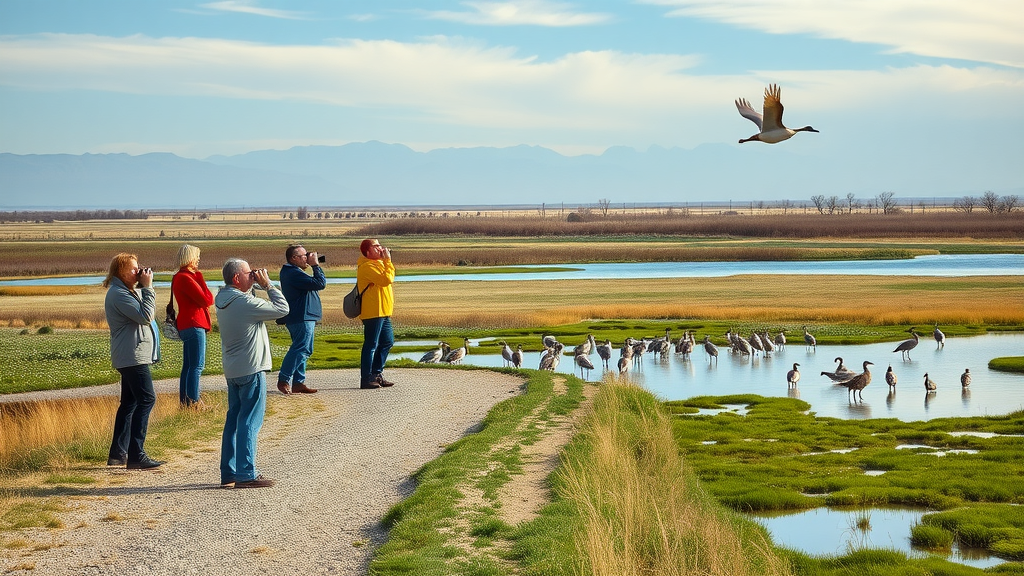
Each season at Monte Vista brings its own spectacle. The migration of sandhill cranes peaks in early March and again in mid-October, turning the refuge into a stage for their mesmerizing dances and trumpet-like calls. Spring also sees the arrival of colorful ducks—Cinnamon teal, Gadwalls, and American widgeons—while summer meadows fill with western meadowlarks and other songbirds. Raptors such as American kestrels and northern harriers can be spotted hunting over the wetlands year-round.
Exploring Monte Vista isn’t limited to migration moments. The refuge’s network of trails, wildlife drive, and viewing pullouts create access points for witnessing daily wildlife activity or simply soaking in the spectacular sunrises and sunsets framed by the San Juan Mountains. Knowing not just when, but where to look, enhances every visit. The refuge provides brochures and trail guides to help visitors make the most of these opportunities, ensuring no one misses out on the full array of nature’s displays.
The Broader Conservation Picture: Monte Vista’s Place in the National Wildlife Refuge System
Monte Vista National Wildlife Refuge’s impact is magnified by its place within the San Luis Valley National Wildlife Refuge Complex and the wider network of U.S. Fish and Wildlife Service refuges across the nation. This complex—including Alamosa and Baca refuges—preserves diverse landscapes ranging from riparian corridors and playa wetlands to grasslands and mountain-fed river systems. Each area faces its own challenges, but together they form a contiguous set of habitats critical for migratory and resident wildlife.
The National Wildlife Refuge System’s legacy is one of foresight: setting aside public lands to ensure future generations inherit the sights, sounds, and stories of America’s wildlife. By visiting Monte Vista, individuals become part of a living heritage—supporting efforts to safeguard these landscapes, understand their delicate balance, and advocate for their continued protection in a rapidly changing world.
Grounded in Conservation: Monte Vista’s Thoughtful Approach to Land and Wildlife Management
The philosophy guiding Monte Vista National Wildlife Refuge is rooted in the idea that land management must evolve to meet both wildlife needs and ecological realities. Its existence depends on a proactive approach—using irrigation, strategic meadow mowing, and habitat restoration to create sanctuaries precisely when and where wildlife require them most. The refuge’s managers balance water allocation, crop rotation, and the careful timing of wetland inundation to support everything from massive crane gatherings to small mammal populations.
This adaptive management extends to public accessibility as well. Visitors have access to trails, viewing pullouts, and the wildlife drive from one hour before sunrise to one hour after sunset, emphasizing both wildlife protection and community engagement. Volunteer-run contact stations, informational kiosks, and downloadable guides reflect a commitment to education and transparency—empowering visitors to experience and understand the refuge’s hidden wonders with respect and curiosity. Monte Vista stands as a model for how human stewardship, scientific understanding, and community involvement can combine to keep wildlife refuges thriving for decades to come.
Real Visitors, Real Inspiration: Tapping Into Seasonal Wonder at Monte Vista
Experiencing Monte Vista is often a story of timing, perspective, and a readiness to be surprised by nature’s rhythms. Many visitors come with the goal of seeing iconic moments—such as the mass arrival of sandhill cranes—but find unexpected joy in every season. One recent visitor shared their journey and insights, offering valuable lessons for anyone planning a visit.
I drove 3 hours to see the cranes. I didn't know there was a visitor center there was not very many signs. Looks mostly like crop land. Google maps navigates you to a random farmland. It should navigate to visitor center. But I should have done my research. I did see about 50 cranes and wasn't in the right spot to see the 20,000 cranes. Still very cool. Do your research before going unlike me. I missed out on seeing all the cranes.
This experience highlights the importance of preparation and curiosity when visiting Monte Vista. With a bit of research and by using the available visitor resources, future guests are far more likely to witness the full spectacle of migration and the serene beauty of this vital refuge. The rewards of engaging with the landscape, learning its patterns, and patiently observing its wildlife are well worth every moment spent in this extraordinary place.
Why Exploring Monte Vista National Wildlife Refuge Is a Journey Worth Taking
The Monte Vista National Wildlife Refuge offers vivid proof that conservation is not a passive act—it’s an ongoing, collaborative effort that benefits both wildlife and people. Through ingenious habitat management and ongoing public engagement, this refuge ensures that every sandhill crane, duck, or raptor passing through finds the resources it needs to thrive. Whether you come for the migration spectacle, the quiet beauty of the wetlands, or a lifelong lesson in ecological connection, the Monte Vista experience is transformative. The collective stewardship demonstrated at the refuge deserves recognition, and its lessons offer hope for conservation projects across the country. To truly understand the magic of migration and the urgency of ongoing habitat protection, there is no substitute for visiting or learning more about Monte Vista National Wildlife Refuge.
Contact the Experts at Monte Vista National Wildlife Refuge
If you’d like to learn more about how Monte Vista National Wildlife Refuge could enrich your understanding of Colorado’s wildlife, contact the team at Monte Vista National Wildlife Refuge.
📍 Address: Monte Vista, CO 81144, USA
📞 Phone: +1 719-589-4021
🌐 Website: https://www.fws.gov/refuge/monte-vista
Location and Hours for Monte Vista National Wildlife Refuge
🕒 Hours of Operation:
Wildlife Drive, Trails, Wildlife Viewing Pullouts are open ONE hour before Sunrise to ONE hour after Sunset daily.
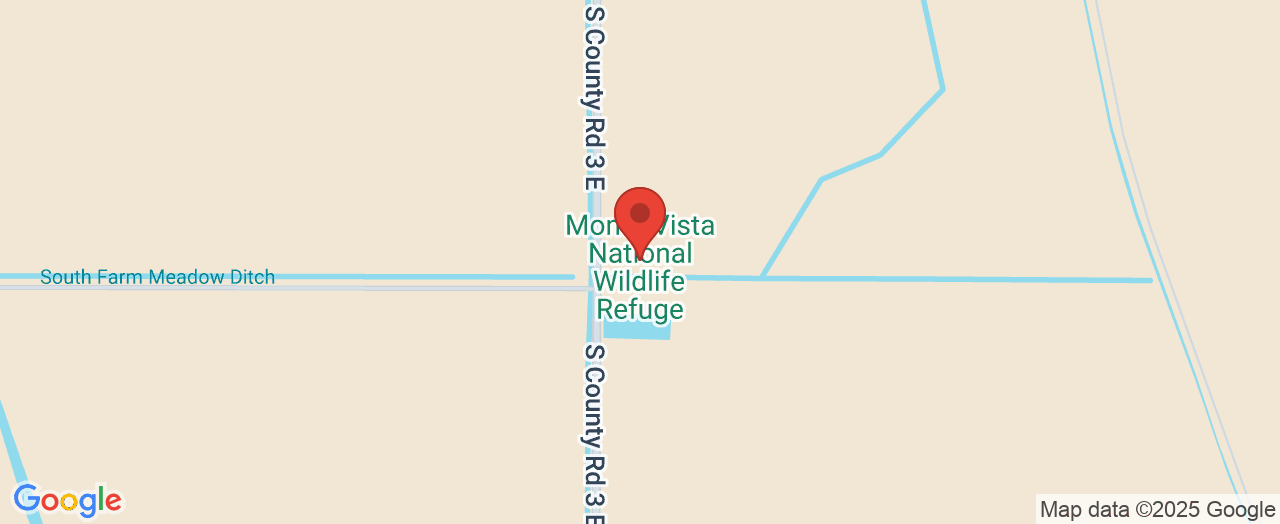
 Add Row
Add Row  Add
Add 





Write A Comment